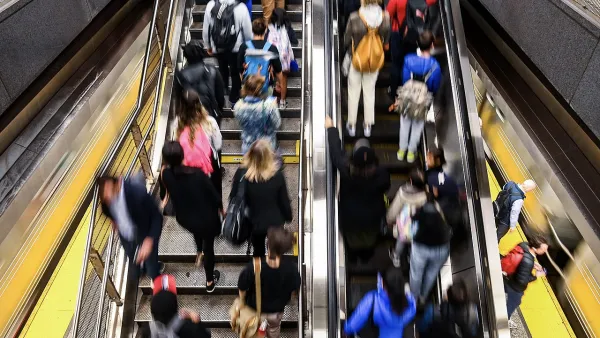The uncompromising writer, who pioneered the position of full-time architecture critic at an American newspaper, and exemplified the pinnacle of the profession for five decades, died on Monday.
Before Huxtable started at The New York Times in 1963, there had never before been a full-time architecture critic for a general-interest newspaper in the U.S. And over the next five decades of fearless criticism, she "opened the priestly precincts of design and planning to everyday readers," said David W. Dunlap in a Times obituary. "For that, she won the first Pulitzer Prize for distinguished criticism, in 1970. More recently, she was the architecture critic of The Wall Street Journal."
“'Mrs. Huxtable invented a new profession,' a valedictory Times editorial said in 1981, just as she was leaving the newspaper, 'and, quite simply, changed the way most of us see and think about man-made environments.'”
"Though knowledgeable about architectural styles," added Dunlap, "Ms. Huxtable often seemed more interested in social substance. She invited readers to consider a building not as an assembly of pilasters and entablatures but as a public statement whose form and placement had real consequences for its neighbors as well as its occupants."
In a tribute to the critic delivered at the Museum of the City of New York in 1996, the writer who followed her at the Times, Paul Goldberger, praised Huxtable as "more than just the most important pioneer of architectural criticism in newspapers in our time: she has been the most important figure in communicating the urgency of some kind of belief in the values of the man-made environment in our time, too. She has made people pay attention. She has made people care. She has made architecture matter in our culture in a way that it did not before her time."
Huxtable's writing was cutting and courageous till the end. Architectural criticism, and the city of New York, will be lesser in her absence.
FULL STORY: Ada Louise Huxtable, Champion of Livable Architecture, Dies at 91

Planetizen Federal Action Tracker
A weekly monitor of how Trump’s orders and actions are impacting planners and planning in America.

Chicago’s Ghost Rails
Just beneath the surface of the modern city lie the remnants of its expansive early 20th-century streetcar system.

Amtrak Cutting Jobs, Funding to High-Speed Rail
The agency plans to cut 10 percent of its workforce and has confirmed it will not fund new high-speed rail projects.

Ohio Forces Data Centers to Prepay for Power
Utilities are calling on states to hold data center operators responsible for new energy demands to prevent leaving consumers on the hook for their bills.

MARTA CEO Steps Down Amid Citizenship Concerns
MARTA’s board announced Thursday that its chief, who is from Canada, is resigning due to questions about his immigration status.

Silicon Valley ‘Bike Superhighway’ Awarded $14M State Grant
A Caltrans grant brings the 10-mile Central Bikeway project connecting Santa Clara and East San Jose closer to fruition.
Urban Design for Planners 1: Software Tools
This six-course series explores essential urban design concepts using open source software and equips planners with the tools they need to participate fully in the urban design process.
Planning for Universal Design
Learn the tools for implementing Universal Design in planning regulations.
Caltrans
City of Fort Worth
Mpact (founded as Rail~Volution)
City of Camden Redevelopment Agency
City of Astoria
City of Portland
City of Laramie





























